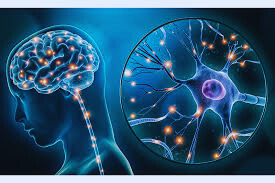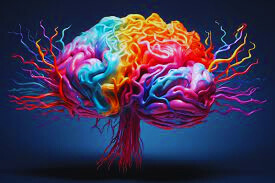Introduction
The human brain, with its intricate network of Neuroscience synapses, has long fascinated scientists and philosophers alike. It is the seat of consciousness, the generator of thoughts and emotions, and the controller of bodily functions. Despite centuries of study, the brain remains one of the most complex and enigmatic organs in the human body. Enter neuroscience, the interdisciplinary field dedicated to unraveling the mysteries of the brain and nervous system. In this comprehensive exploration, we embark on a journey through the realm of neuroscience, delving into its history, methodologies, major discoveries, and prospects.

History of Neuroscience
The origins of neuroscience can be traced back to ancient civilizations such as the Egyptians and Greeks, who pondered the nature of the brain and its role in cognition and behavior. However, it wasn’t until the Renaissance that significant strides were made in understanding the structure and function of the brain. Figures like Leonardo da Vinci and Andreas Vesalius made pioneering contributions to neuroanatomy, laying the groundwork for future investigations.
The 19th century witnessed a surge of interest in neuroscience, spurred by advances in microscopy and physiology. The development of staining techniques by pioneers like Camillo Golgi and Santiago Ramón y Cajal allowed for the visualization of individual neurons and their intricate connections. Meanwhile, the advent of electrophysiology enabled researchers to study the electrical activity of the brain, leading to the discovery of action potentials and the principles of neural communication.
The 20th century marked a golden age for neuroscience, characterized by breakthroughs in neurochemistry, neuropharmacology, and neuroimaging. The discovery of neurotransmitters such as dopamine and serotonin revolutionized our understanding of brain function and behavior. The invention of techniques like positron emission tomography (PET) and functional magnetic resonance imaging (fMRI) provided unprecedented insights into the living brain, allowing researchers to map neural activity with exquisite detail.
Methodologies in Neuroscience
Neuroscience employs a diverse array of methodologies to investigate the brain and nervous system at multiple levels of organization. At the macroscopic level, neuroimaging techniques like fMRI and diffusion tensor imaging (DTI) enable researchers to visualize brain structure and activity in vivo. These non-invasive tools offer valuable insights into brain networks, connectivity patterns, and functional specialization.
At the microscopic level, neuroscientists utilize a variety of histological and electrophysiological techniques to study the cellular and molecular mechanisms underlying neural function. Immunohistochemistry, for example, allows researchers to label specific proteins and visualize their distribution within brain tissue. Patch clamp electrophysiology enables the recording of electrical signals from individual neurons, elucidating their firing patterns and ion channel dynamics.
In recent years, advancements in molecular biology and genetics have revolutionized neuroscience research. Techniques such as optogenetics and chemogenetics enable precise control of neural activity in animal models, allowing researchers to probe the causal relationships between neural circuits and behavior. Meanwhile, genome editing technologies like CRISPR-Cas9 offer unprecedented opportunities for manipulating the mouse genome and studying the genetic basis of neurological disorders.
Major Discoveries in Neuroscience
The field of neuroscience has witnessed a plethora of major discoveries that have reshaped our understanding of the brain and revolutionized clinical practice. Among these groundbreaking findings are:
- Discovery of Neurons: In the 19th century, Santiago Ramón y Cajal and Camillo Golgi independently proposed the neuron doctrine, which states that the nervous system is composed of discrete cells called neurons. This fundamental insight laid the foundation for modern neuroscience and revolutionized our understanding of brain structure and function.
- Localization of Function: In the late 19th and early 20th centuries, researchers such as Paul Broca and Carl Wernicke made seminal contributions to our understanding of brain function by identifying specific brain regions responsible for language production and comprehension. This concept of localization of function laid the groundwork for the field of neuropsychology and provided crucial insights into the organization of the human brain.
- Discovery of Neurotransmitters: Throughout the 20th century, researchers identified a myriad of chemical messengers, or neurotransmitters, that mediate communication between neurons. From acetylcholine to dopamine to serotonin, these molecules play key roles in regulating mood, cognition, and behavior. The discovery of neurotransmitters revolutionized our understanding of brain function and paved the way for the development of psychoactive drugs to treat psychiatric disorders.
- Mapping of the Human Genome: The completion of the Human Genome Project in 2003 provided neuroscientists with a comprehensive map of the human genetic code, opening new avenues for research into the genetic basis of neurological disorders. This landmark achievement has led to the identification of numerous genes implicated in conditions such as Alzheimer’s disease, Parkinson’s disease, and autism spectrum disorders, offering hope for the development of targeted therapies.
- Advances in Neuroimaging: In recent decades, neuroimaging technologies such as fMRI and PET have revolutionized our ability to study the living brain, enabling researchers to map neural activity with unprecedented precision. These non-invasive tools have shed light on the neural basis of various cognitive functions, from perception to memory to decision-making, and have provided invaluable insights into the mechanisms underlying neurological and psychiatric disorders.
Neuroscience and Society
The findings of neuroscience have profound implications for society, shaping our understanding of human nature, informing public policy, and guiding medical practice. Neuroscientific research has provided crucial insights into the biological underpinnings of behavior, challenging traditional notions of free will, responsibility, and moral agency. As our understanding of the brain advances, so too do our ethical and philosophical debates surrounding issues such as neuroenhancement, brain-machine interfaces, and artificial intelligence.
Moreover, neuroscience has revolutionized clinical practice, leading to the development of novel treatments for neurological and psychiatric disorders. From the discovery of dopamine agonists for Parkinson’s disease to the development of selective serotonin reuptake inhibitors (SSRIs) for depression, neuroscientific research has yielded a plethora of pharmacological interventions that have improved the lives of millions of individuals worldwide. Furthermore, advances in neuroimaging have enabled early detection and diagnosis of neurological disorders, paving the way for personalized treatment approaches tailored to individual patients’ neurobiology.
Future Directions in Neuroscience
Looking ahead, the field of neuroscience is poised for continued growth and innovation, driven by advancements in technology, interdisciplinary collaboration, and a deeper understanding of the brain’s complexities. One promising avenue of research is the development of brain-computer interfaces (BCIs), which hold the potential to restore lost sensory and motor function in individuals with neurological injuries or disorders. Recent breakthroughs in neural prosthetics and brain-machine interfaces have demonstrated the feasibility of translating neural signals into actionable commands, offering hope for paralyzed individuals to regain independence and mobility.
Furthermore, the burgeoning field of connectomics aims to map the brain’s intricate network of neural connections at unprecedented resolution, providing insights into the neural circuits underlying complex behaviors and cognitive functions. Advances in artificial intelligence and machine learning are facilitating the analysis of large-scale neural datasets, enabling researchers to uncover patterns and relationships that were previously inaccessible. By elucidating the neural basis of cognition and behavior, connectomics promises to revolutionize our understanding of the brain and inform the development of novel therapeutic interventions for neurological and psychiatric disorders.
In conclusion,
neuroscience is a multifaceted discipline that encompasses a wide range of methodologies, from neuroimaging to molecular genetics, and spans multiple levels of organization, from the molecular to the behavioral. Through centuries of inquiry, neuroscient





